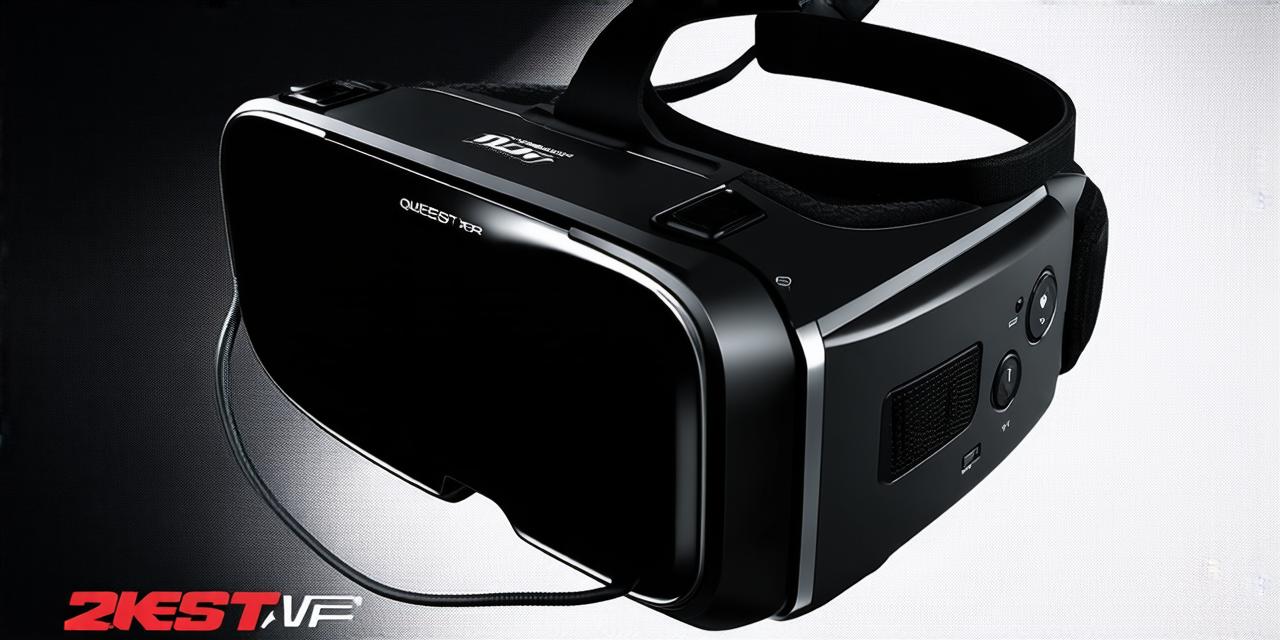Virtual Reality (VR) technology has come a long way since its inception, and it’s now possible to create immersive games that can transport players into different worlds. The Oculus Quest 2 is one of the most popular VR devices on the market, with its wireless design and low cost making it accessible to a wide audience.
1. Choose the right engine
The first step in developing a Quest 2 game is to choose the right game engine. There are several game engines available, including Unity, Unreal Engine, and Source 2. Each engine has its own strengths and weaknesses, so it’s important to choose one that best suits your needs. For example, if you’re looking for a beginner-friendly engine, Unity is a great choice. It’s easy to use and has a large community of developers who can provide support and resources.
2. Optimize your game for performance
One of the biggest challenges when developing a VR game is optimizing it for performance. The Quest 2 has limited hardware, so it’s important to ensure that your game runs smoothly without any lag or stuttering. Here are some tips for optimizing your game:
- Keep your graphics settings low to medium. High graphics settings can cause the game to slow down and may even cause motion sickness.
- Use efficient lighting and textures. Avoid using too many complex textures, as this can slow down the game.
- Minimize draw calls. Draw calls are when the GPU needs to render objects on the screen. By minimizing the number of draw calls, you can reduce the load on the hardware and improve performance.
- Use occlusion culling. Occlusion culling is a technique that hides objects that are not visible to the player, reducing the amount of work the GPU has to do.
3. Test your game extensively
Testing your game extensively is crucial when developing a VR game. You need to ensure that your game runs smoothly and without any bugs or issues. Here are some tips for testing your game:
- Test your game on different devices. The Quest 2 has limited hardware, so it’s important to test your game on other devices to ensure compatibility.
- Playtest your game extensively. Playtesting is essential for identifying any issues with the game and making improvements.
- Use profiling tools. Profiling tools can help you identify performance bottlenecks in your game and optimize them for better performance.
4. Optimize for comfort
Comfort is an important consideration when developing a VR game. Players need to feel comfortable in the virtual world, or they may become motion sickness. Here are some tips for optimizing your game for comfort:
- Keep the movement smooth and fluid. Sudden movements can cause motion sickness, so it’s important to keep the movement smooth and fluid.
- Avoid sudden changes in brightness or contrast. Sudden changes in brightness or contrast can cause eye strain and discomfort, so it’s important to avoid them.
- Provide a comfortable environment. Players need a comfortable environment to play in, so it’s important to provide one. This could include adjustable lighting, temperature, and seating options.
5. Incorporate social features
Social features are an excellent way to engage players and keep them coming back for more. Here are some tips for incorporating social features into your game:
- Allow players to join or create groups. Players can join or create groups to play with friends or other players. This allows for a sense of community and collaboration.
- Enable player communication. Players need a way to communicate with each other, so enable player communication through chat or voice chat. This allows for real-time interaction and coordination.
- Provide leaderboards and achievements. Leaderboards and achievements provide a sense of accomplishment and motivation for players to continue playing. They can also foster friendly competition and social interaction.
Summary
Developing a Quest 2 game requires careful planning and optimization to ensure optimal performance and comfort for the player. By following these tips, you can create an engaging and immersive VR game that players will love to play. Remember to choose the right engine, optimize your game for performance, test your game extensively, optimize for comfort, and incorporate social features to keep players engaged. With these tips in mind, you’ll be well on your way to creating a successful Quest 2 game.
